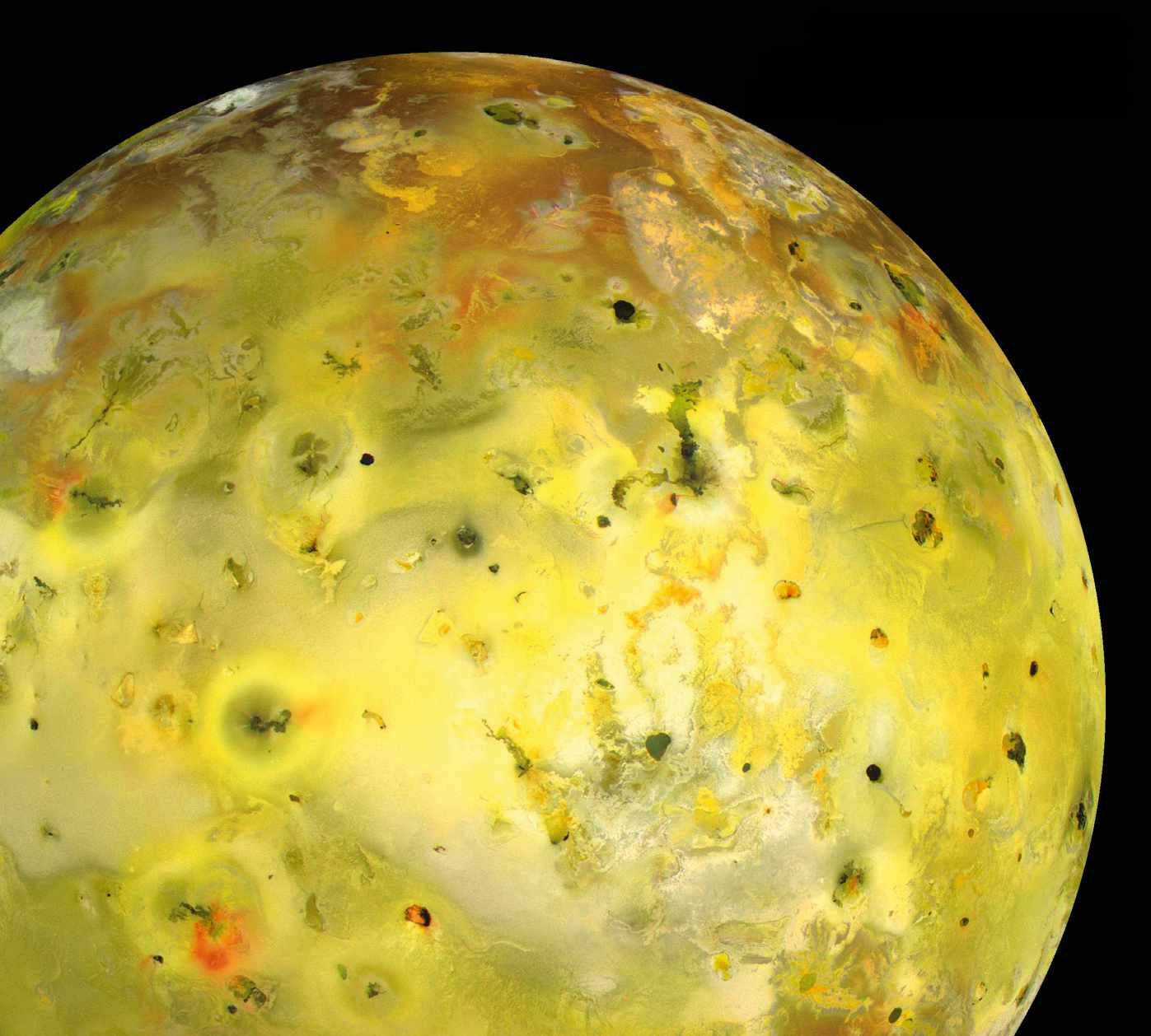Our experts examine the hottest new research
CUTTING EDGE
Io’s molten heart
Jupiter’s moon probably has a magma ocean, rather than a spongy centre

The moon Io, the innermost Galilean satellite of Jupiter, is a violent, tortured little world. Despite being almost the same size as our own Moon, the two couldn’t be more different. Our Moon is a cold, dead world, while Io is the most volcanically active body in the Solar System – even more so than Earth – and is constantly spewing itself inside out with intense eruptions.
The driving force behind all this activity is tidal heating. The powerful gravitational pull of Jupiter tugging on Io constantly distorts its shape. This perpetual bending and flexing generates intense tidal heating in the interior of the moon, melting its silicate rock crust into hot magma. Normally, tidal effects would dissipate as the moon’s orbit becomes more circular over time, and its rotation becomes locked to its orbital period. But in Io’s case, the gravitational effects of the other Galilean moons keep nudging it into an elliptical orbit, maintaining this fierce tidal heating so that its volcanism has persisted for billions of years.
“Does this 50km-thick molten rock layer exist as a complete magma ocean, or is it more like a magmatic sponge?”
What’s not well understood, however, is exactly how much magma melt there is below the surface, or what form it takes. This is important because it affects the dissipation of tidal heating, which is a key part in understanding Io’s surface features. Recently, a reanalysis of 1990s data from the Galileo probe’s magnetometer instrument has suggested that Io could have a global layer of largely molten rock at least 50km-thick underground. But does this exist as a complete magma ocean, or is it more like a ‘magmatic sponge’, with an interconnected network of solid rock soaked through with liquid magma?
Yoshinori Miyazaki and David Stevenson, both at Caltech in Pasadena, California, have built a computer model to study different possibilities for Io’s subsurface magma, as well as different degrees of tidal heating. Their results indicate that the amount of tidal heating within Io is probably insufficient to maintain a spongey structure of interconnected solid rock bathed in molten magma.
Such a composition would rapidly separate into two distinct layers: a magma ocean floating on top of a mostly solid shell. Since tidal dissipation acts much more effectively on the rigid characteristic of solids, this lower layer experiences most of the heating and keeps the ocean above it liquid (although Miyazaki and Stevenson note that the magma ocean need not be pure liquid – it’s likely to contain some degree of solidified crystals). The magma ocean then transports that internal heat up to Io’s surface, feeding its many volcanoes. Miyazaki and Stevenson have shown that if the hypothesis of a melt-rich layer in Io’s subsurface is correct, it should exist as a magma ocean rather than a magmatic sponge. And we may not have long to wait to find out for sure. The Juno mission is currently exploring the Jovian system, and through its fly-bys of Io will be able to measure the rigidity of the moon’s crust. This will provide vital information on the details of a melt-rich layer in the subsurface.

Prof Lewis Dartnell is an astrobiologist at the University of Westminster.
Lewis Dartnell was reading A Subsurface Magma Ocean on Io: Exploring the Steady State of Partially Molten Planetary Bodies by Yoshinori Miyazaki and David J Stevenson
Read it online at: arxiv.org/abs/2211.06945